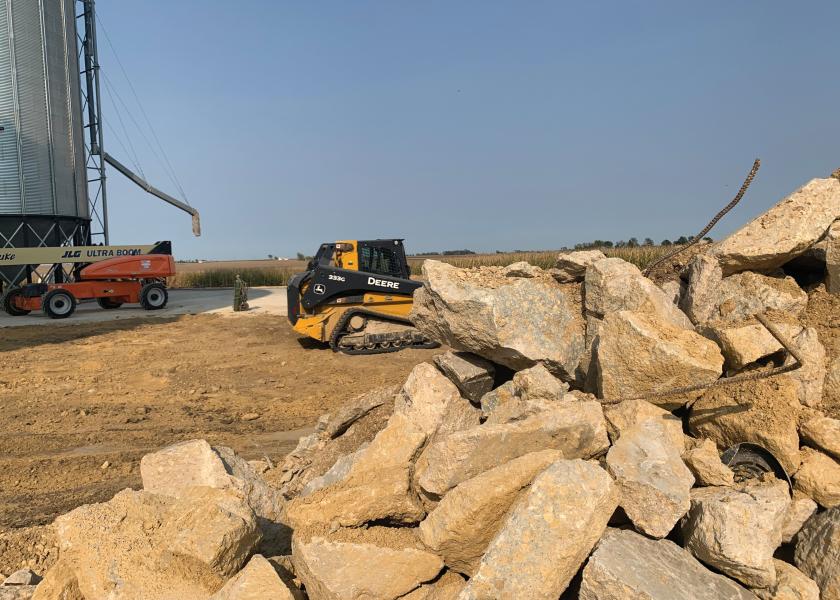Derecho’s Long Hangover for Storage

On one hand, Dennis Campbell feels fortunate. His soybean crop in eastern Iowa is yielding much better than expected after the Aug. 10 derecho swept through his area.
However, the Grand Mound, Iowa, farmer’s on-farm storage was not so fortunate. He had $1.5 million worth of structural damage. He lost two 190,000-bu. bins, a 65,000-bu. wet bin and grain dryer.
Widespread Devastation
Tens of millions of bushels of on-farm storage were lost due to the derecho, as well as commercial storage. Estimates show the storm damaged 57 million bushels of licensed grain storage in Iowa, according to the Iowa Department of Agriculture.
Luckily, for Campbell, a new grain dryer arrived in early fall. And, he has two small, older bins, which can hold 35% to 40% of his production.
Campbell says it will be 2021 before he can replace his lost bins.
Custom Builders of Tipton, Iowa, is one of the companies scrambling to rebuild grain bins. Owners say it might be difficult to rebuild everything lost by 2021.
“I’ve been here 40 years, and I’ve never seen anything like this,” says Rob Bohnsack, Custom Builders owner. “We will not get done this year or next year. I would hope maybe by harvest 2022 we’d be back to where farmers were.”
Bohnsack says he’s prioritizing the farmers who don’t have any storage. While his company has the supplies, they lack manpower.
“We could use a lot of bin crews with jacks and millwrights,“ he says. “We just don’t have them. They’re not available.”
Winter will also cause a delay, Bohnsack says. His crews will likely build throughout November. A silver lining is most of the concrete pads are stable, so they won't need to pour much concrete in cold weather.
2020 in the Rearview Mirror
Back at the field, Campbell will continue to harvest and keep some of his grain in flat storage inside a building he rents from a neighbor. It’s an additional expense and another step, but a way to work to put 2020 behind him.
“We’ll just make it through harvest 2020 and move on to 2021,” Campbell says.







